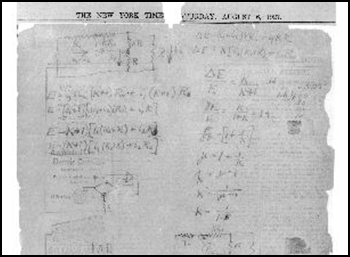Feedback Electronics

Course introduction
_____________________________________________________________________________________
 Image of New York Times publication, 1927. |
Feedback Electronics
GUILLERMO CARPINTERO DEL BARRIO
|
|---|
Classroom lectures (12h), Exercises (8h) and Laboratory (4h).
PRERREQUISITES AND RECOMMENDED PREVIOUS KNOWLEDGE
The student is assumed to have background in electronics, with skills to analyze the bias point of transistor circuits (BJT, JFET, MOS), and calculate the frequency response set by DC isolation (low end) and parasitic (high end) capacitors.GENERAL DESCRIPTION OF THE COURSE
The goal of the course is to take the students from the active amplifiers designed with different trasistor types, into the concept of negative feedback. This is a fundamental technique in engineering electronics to reduce the impact of the parameter dispersion of the transistor (component) onto the amplifier (system) characteristics: gain, input impedance and output impedance. Once the advantages of negative feedback are clear, and the analysis techniques explained, the course covers a major issue of of feedback. The impact of feedback on the amplifier stability, through the appearance of positive feedback at given frequencies. Means to overcome oscillation are shown.
The last part of the course deals with the use designing circuits with positive feedback to develop linear oscillators, in which a signal at a desired frequency is self generated.
OBJECTIVES: KNOWLEDGE AND SKILLS
Analysis and design of feedback amplifiers.
Analysis and design of oscillator circuits.
PRACTICAL ASSIGMENTS AND ASSESSMENT ACTIVITIES
Handouts are included for the students to assess their level of understanding of the subject. These can be used by instructors to grade the work of the students during the course (recomended weighting 40%), and a final exam is recomended (60%).